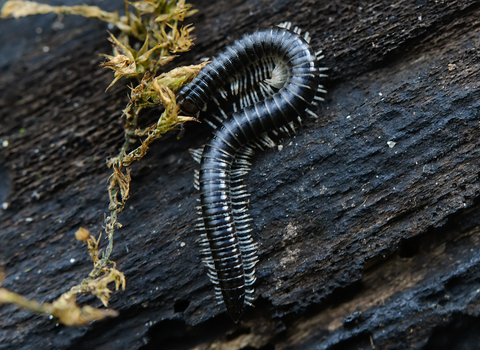
White-legged Snake Millipede ©northeastwildlife.co.uk
White-legged snake millipede
Found in compost heaps and under stones in gardens, the White-legged snake millipede is a common minibeast. Despite its name, it has about 100 legs. It is an important recycler of nutrients, feeding on decaying matter.
Scientific name
Tachypodoiulus nigerWhen to see
January to DecemberSpecies information
Category
Statistics
Length: up to 6cmCommon.
